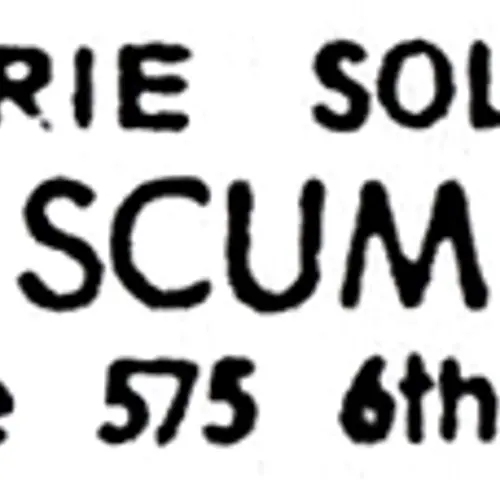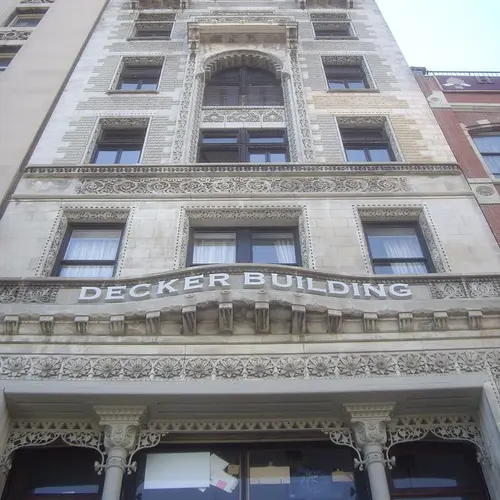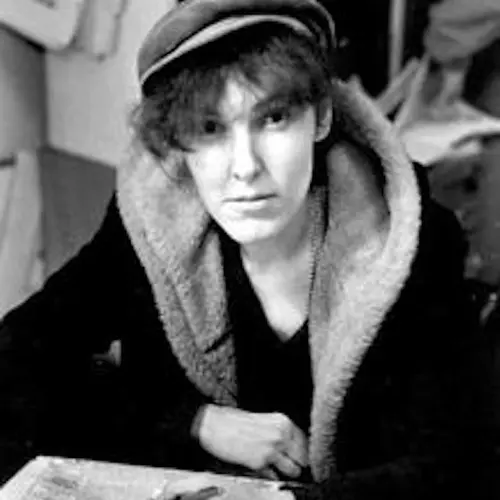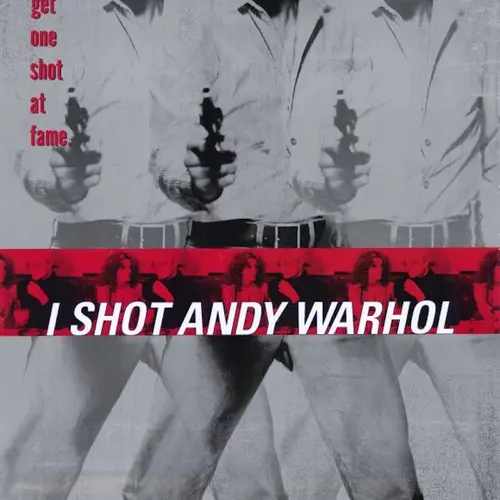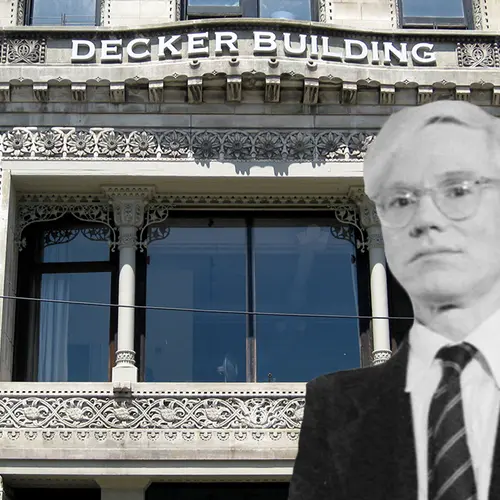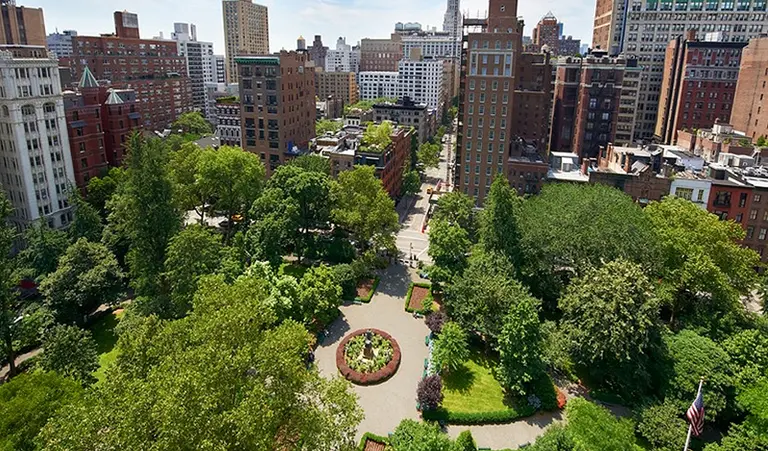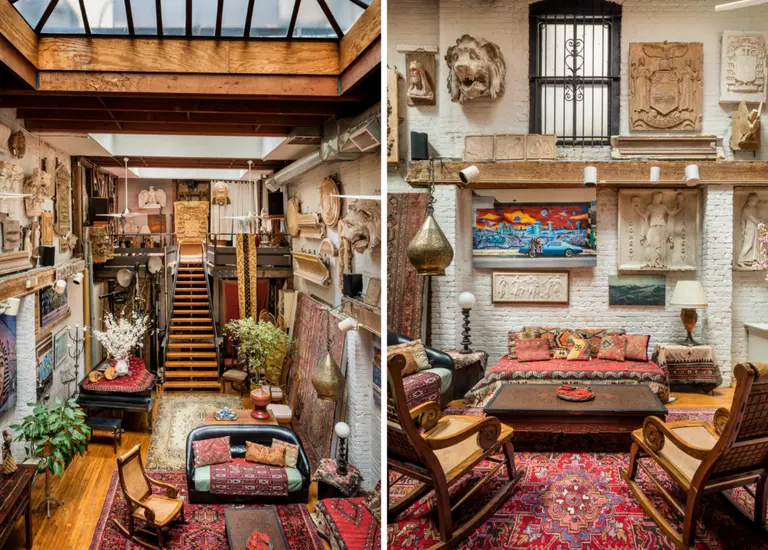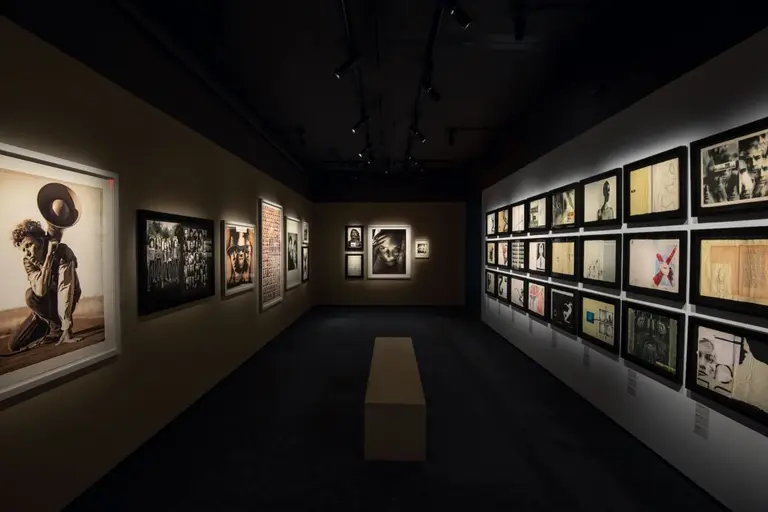She shot Andy Warhol: The story behind actress Valerie Solanas’ attempt to assassinate a NYC icon
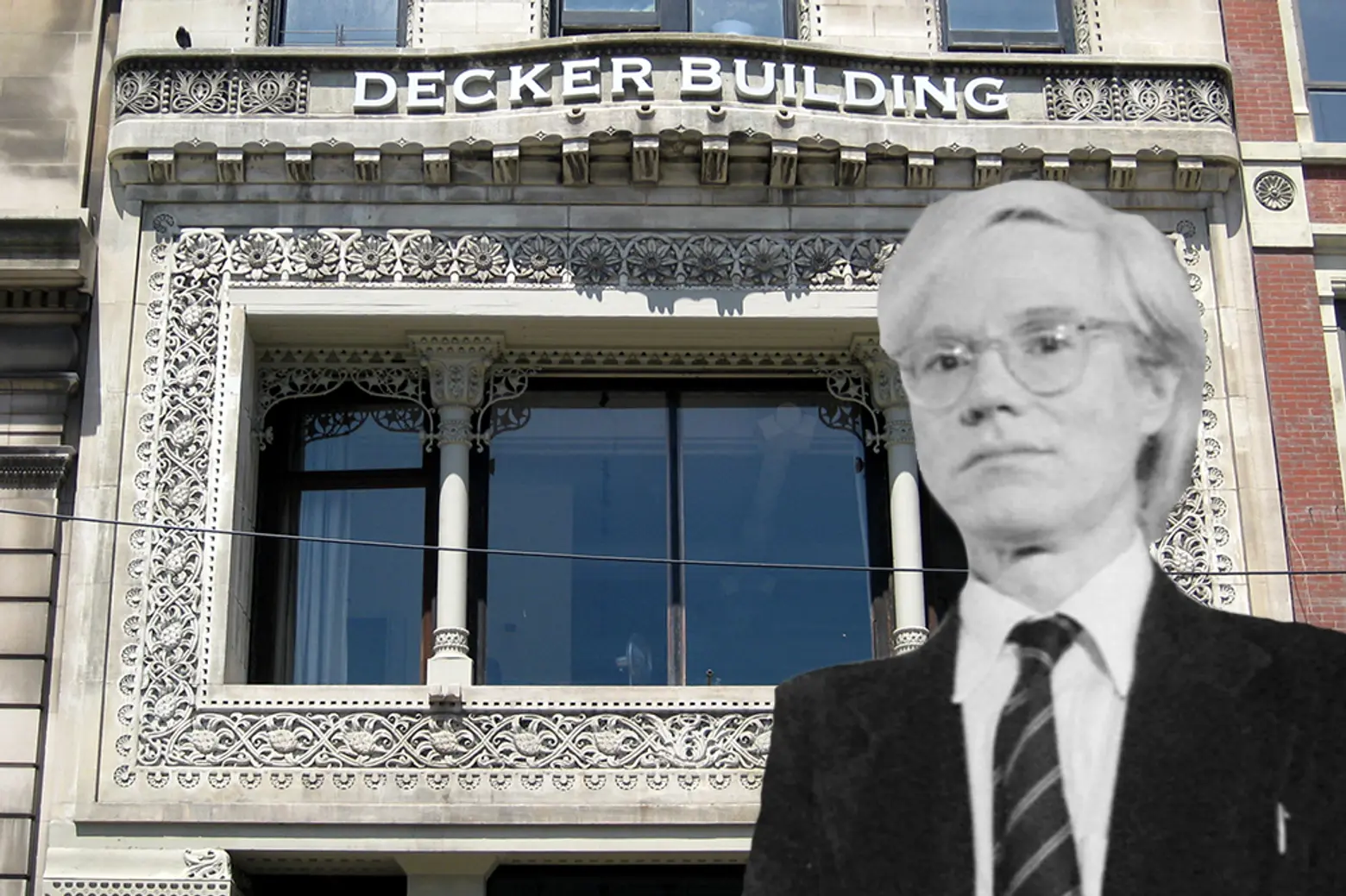
Photo of the Decker Building via Wally Gobetz on Flickr; photo of Andy Warhol via Wikimedia
1968 was a turbulent year marked by riots, massive protests, and assassinations of notable political figures such as Martin Luther King Jr. and Bobby Kennedy.
But 50 years ago on June 3, 1968, an attempted assassination in New York City shook the downtown art world more deeply and personally than any of these other headline-grabbing events. Perhaps that was because it involved two quintessentially downtown figures — one a world-famous artist; the other, a struggling, mentally unbalanced aspiring writer/performer/self-proclaimed social propagandist, whose greatest claim to fame ended up being her attempt to kill the former, her one-time employer.
On that unusually cool grey day, Valerie Solanas went to Andy Warhol’s ‘Factory,’ then at 33 Union Square West, with a gun she had bought a few weeks earlier. She shot at Warhol three times, missing him twice but striking him the third time. She also shot art critic Mario Amaya, who was in the Factory at the time, and attempted to shoot Warhol’s manager Fred Hughes at point blank, but the gun jammed.
Solanas left the factory and turned herself into the police. She was charged with attempted murder, assault, and illegal possession of a gun. While in custody, Solanas was diagnosed with paranoid schizophrenia. She plead guilty to “reckless assault with intent to harm,” and served a three-year prison sentence, including psychiatric hospital time.
Sadly for Solanas, the assassination attempt was the zenith of her fame. After her release from prison, she moved to San Francisco, where she continued to attempt to publish her writings, to little notice. She died of pneumonia in almost total obscurity in 1988, though in later years her notoriety increased, including with the release in 1996 of the independent film based upon her life, “I Shot Andy Warhol.”
Solanas was no ordinary figure, though like many in the 1960’s, she was a drifter drawn to the Greenwich Village by the promise of cheap living and a receptive climate for radical ideas and unconventional lifestyles.
Born in Ventnor City, New Jersey, she was a troubled child, who later claimed she had been abused by several different male relatives, preferring to run away and become homeless as a teenager. But she also displayed precocious intelligence and ambition, graduating from high school on time in spite of the challenges she faced and earning a degree in psychology from the University of Maryland, College Park. There she became known for a militant brand of feminism she espoused, and, in spite of the highly restrictive laws and mores of the day, declared herself a lesbian.
By the mid-1960’s, she had moved to New York City, where she began begging and working as a prostitute to support herself. In 1965, she wrote a play titled “Up Your Ass” about a man-hating prostitute and panhandler who ends up killing a man, which would not only presage but indirectly lead to her attempt upon Warhol’s life.

An ad placed by Solanas in The Village Voice, April 27, 1967; via Wikimedia
In 1967 Solanas wrote and self-published (via mimeograph) The SCUM Manifesto, a radical feminist screed which came to be both reviled and celebrated, but which attracted little attention at the time. The manifesto called for the overthrowing of the male gender and for women to institute automation and take over the world.
“SCUM” may or may not have stood for “Society for Cutting Up Men,” a phrase which appears on the cover, but which scholars believe Solanas never intended as the literal meaning of SCUM. She sold the manifesto on the streets on Greenwich Village, charging women one dollar and men two. By the following spring, she had sold about 400 copies.
The manifesto opens:
Life in this society being, at best, an utter bore and no aspect of society being at all relevant to women, there remains to civic-minded, responsible, thrill-seeking females only to overthrow the government, eliminate the money system, institute complete automation and destroy the male sex. It is now technically feasible to reproduce without the aid of males (or, for that matter, females) and to produce only females. We must begin immediately to do so. Retaining the male has not even the dubious purpose of reproduction. The male is a biological accident: the Y (male) gene is an incomplete X (female) gene, that is, it has an incomplete set of chromosomes. In other words, the male is an incomplete female, a walking abortion, aborted at the gene stage.
It was around this time, in 1967, that Solanas first met Warhol, outside the Factory, where she asked him to publish her play, Up Your Ass. Warhol told Solanas the play was “well typed” and offered to read it. However, Warhol eventually told Solanas that he lost her play (some in the Factory claimed that Warhol found the play so dirty that he assumed it was being offered to him for production by the police as a form of entrapment).
In response, Solanas demanded monetary remuneration from Warhol. Instead, he offered her $25 to appear in his film I, A Man, which she did. Solanas seemed to be happy with the arrangement, and with Warhol, bringing the new publisher of the SCUM Manifesto, Maurice Girodias, along with her to see the film.
But somewhere along the way, things went sour between her and Warhol, as well as Girodias, at least in Solanas’ mind. Solanas became increasingly combative with several people in her life, demanding they lend her money, and she seemed increasingly angry about the control she felt both Warhol and Girodias had over her life. She came to believe that both were conspiring against her.
With this in her head, on June 3rd, 1968, Solanas went to the Chelsea Hotel, where Girodias was living, with the intent to shoot him. However, she was told that he was out of town, and never found him.
Unfortunately for Andy Warhol, though several people at the Factory tried to keep Solanas from him, telling her that he too was away, she finally encountered him in the elevator of the building. She followed him inside the Factory, and fired off several bullets. Though only one hit Warhol, it went through his lungs, spleen, liver, stomach, and esophagus. After five hours of surgery, Warhol’s life was saved, but changed forever.
The very public, outgoing pop artist became much more guarded and reclusive. He spent much of the rest of his life worried that Solanas (who stalked him by phone for a while after her release from prison) would try to shoot him again. Warhol was left physically frail from the shooting as well, and his injuries were believed to have contributed to his untimely death in 1987.
When arrested for the shootings, Solanas told reporters that the reason for why she did it could be found in the SCUM Manifesto. Girodias immediately had the SCUM Manifesto published, and sales picked up considerably. Solanas was for a time hailed as a hero by some radical feminists and other revolutionaries. But her instability and apparent mental illness kept her from ever reaching the mass audience she desired — at least in her lifetime. At the time of her death in 1988, Solanas was living in a single room occupancy hotel in the Tenderloin District of San Francisco.
* Editor’s note: A version of this post appeared on Off the Grid on June 2, 2014
This post comes from the Greenwich Village Society for Historic Preservation. Since 1980, GVSHP has been the community’s leading advocate for preserving the cultural and architectural heritage of Greenwich Village, the East Village, and Noho, working to prevent inappropriate development, expand landmark protection, and create programming for adults and children that promotes these neighborhoods’ unique historic features. Read more history pieces on their blog Off the Grid.
RELATED:

